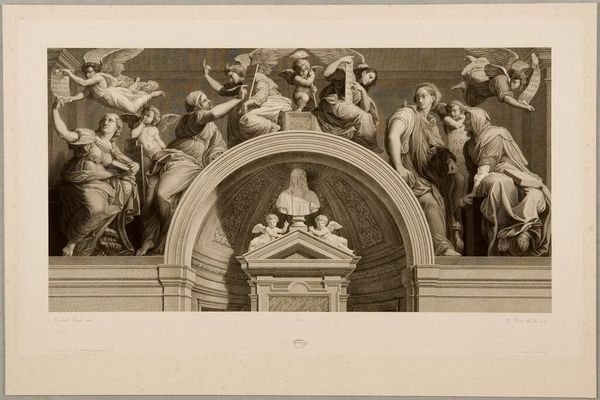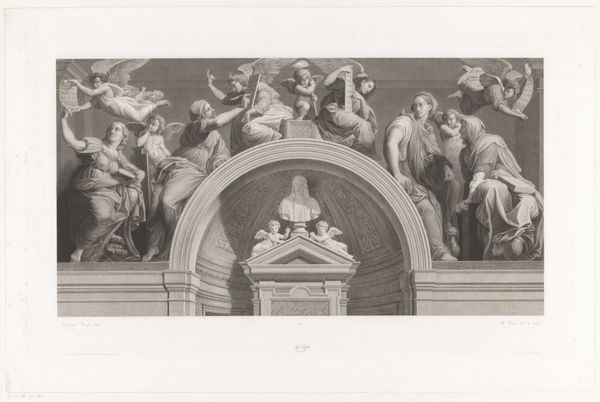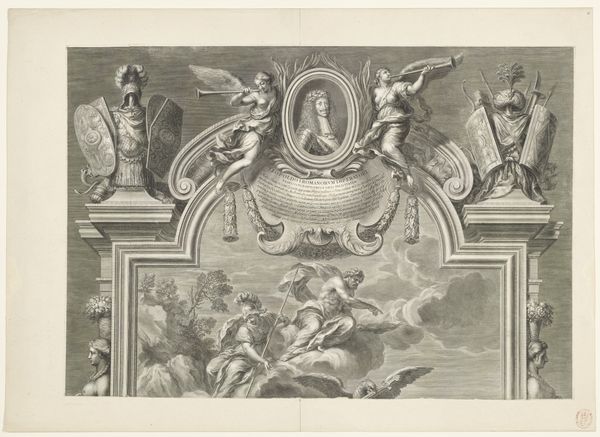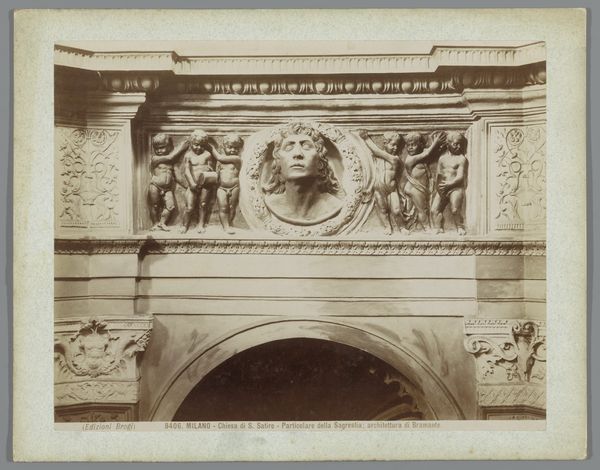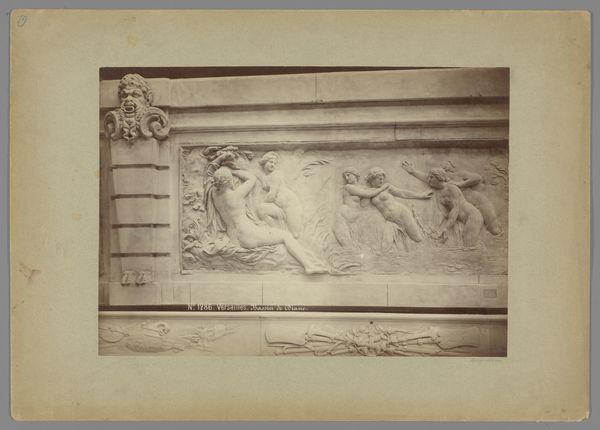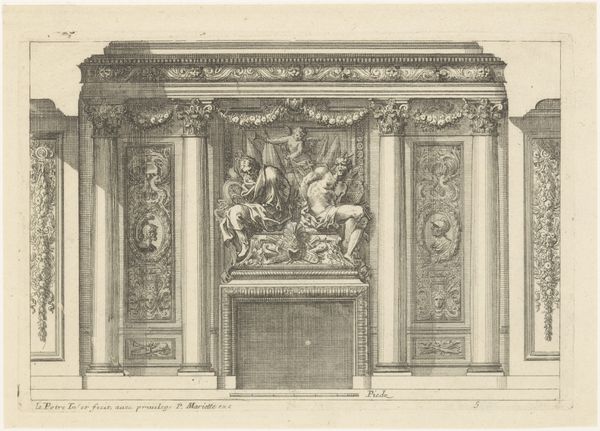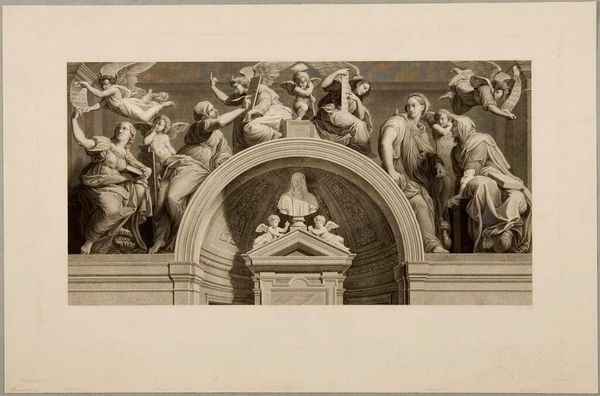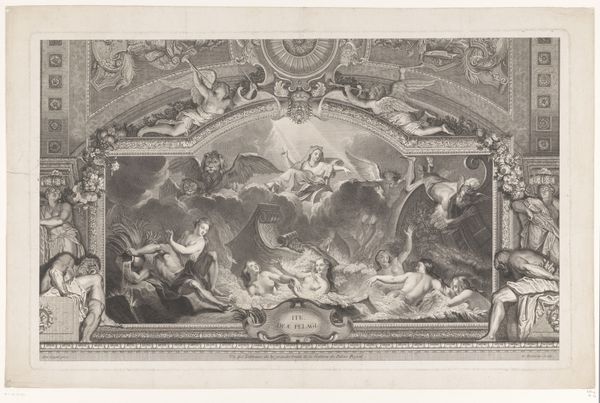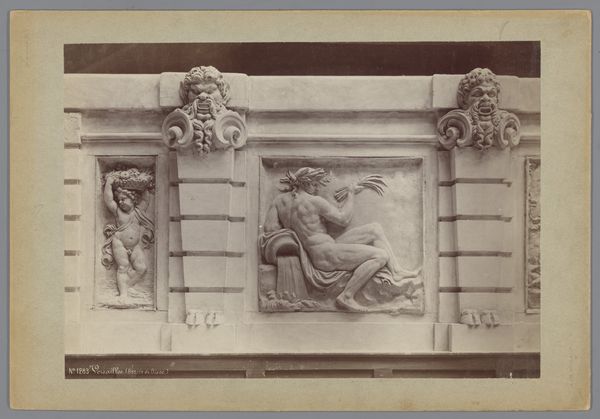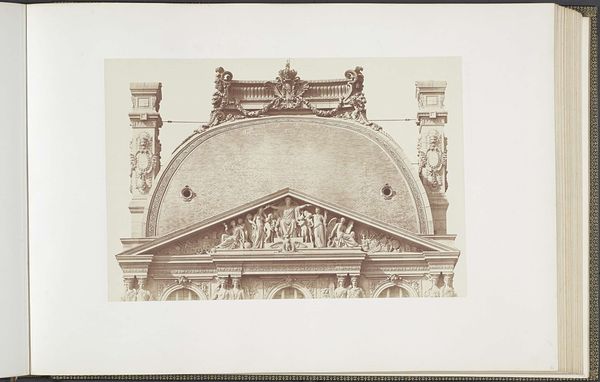
Fotoreproductie van fresco Il quattro Sibille door Rafaël in de Santa Maria della Pace te Rome c. 1857 - 1875
0:00
0:00
print, fresco, photography, gelatin-silver-print
# print
#
fresco
#
11_renaissance
#
photography
#
gelatin-silver-print
#
history-painting
#
italian-renaissance
Dimensions: height 203 mm, width 260 mm
Copyright: Rijks Museum: Open Domain
Editor: Here we have a gelatin silver print, dating from around 1857 to 1875, showing a fresco by Raphael called "The Four Sibyls." I’m struck by how this photograph attempts to capture and translate the original fresco's grandeur, even though it is only a monochrome reproduction. How can we understand this kind of image in its cultural moment? Curator: That's a keen observation! To me, this photograph speaks volumes about the 19th century's fascination with the Renaissance. It's not just a reproduction, but a reinterpretation, isn't it? Consider how photography democratized access to art, particularly for those who couldn't travel to Rome. But let’s also think critically: who was granted this access? Who was deciding which images were circulated, and whose narratives were amplified through this medium? What social classes or races may not have benefited equally from this access? Editor: That makes me think about power dynamics, for sure. Did the photographer, James Anderson, have a particular agenda in photographing this specific fresco? Curator: Precisely! Think about the themes within the fresco itself: the Sibyls were female figures believed to possess prophetic abilities. In this photograph, we see them positioned within a historical narrative constructed and controlled largely by men. Does Anderson's photograph challenge or reinforce existing hierarchies of gender, class, or access to knowledge and historical narratives? Or even faith? What impact might the photograph’s sepia tone have had in implying an "authentic" reproduction of this specific time? Editor: So, the photograph is not just about making art accessible, but about controlling how we understand it. I'm starting to see that the context is crucial. Curator: Exactly! This work gives us space to think about who gets to tell whose stories and the implications of circulating these narratives widely. Editor: This makes me want to consider the politics inherent in preservation and representation itself. Thank you!
Comments
No comments
Be the first to comment and join the conversation on the ultimate creative platform.
